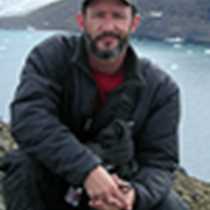Drake Passage
The winds were blowing lightly, the seas were rolling, the birds were flying; in other words a typical day in the Drake Passage. Sir Francis Drake, the first Englishman to sail around the world, was blown south in a storm off the coast of South America. The storm pushed him and his ship south of 57 degree S. His subsequent voyage proved that Tierra del Fuego was not connected to the famed Terra Australis Incognita (The Unknown Southern Land) now called Antarctica. Our voyage will be to that famed now-known land, but in a much different vessel than he travelled in these waters some 430 years ago.
The morning conditions gave us a chance to see what the seas can be like after the wind has blown for a few days with swells and following seas. After breakfast there was an introduction to the Natural History Staff and our guest speakers. Later in the morning a presentation was done on getting to know our cameras. This was welcome as outside were plenty of opportunities to use our cameras to capture the nomads of the wind — seabirds. We learned the names of many of the flighted seabirds (non-penguins) from Larry after lunch. We then went out in the cold air and damp conditions to witness the incredible abilities of these animals. Without wind seabirds can’t make their living plying the waves in search of food. With the wind the following were enjoyed today: giant petrels, pintado petrels, black browed albatross, grey headed albatross, prions, southern fulmars, wandering albatross, and the most elegant of all, the pictured light mantled sooty albatross. It was a Drake Passage full of life and potential for tomorrow as we venture ever closer to Antarctica.




